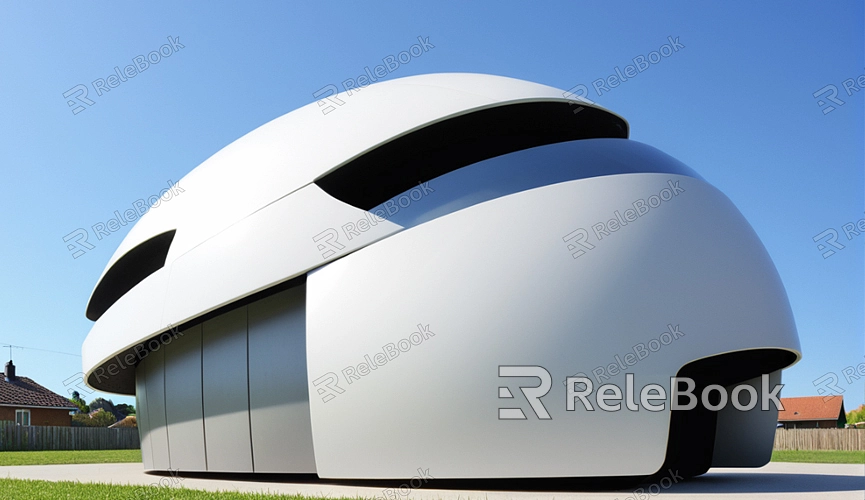How to Reduce the File Size of SketchUp Models?
When using SketchUp for 3D modeling, file sizes can quickly grow, especially when models contain a lot of details and components. Large files not only affect software performance but can also create difficulties in file transfer and saving. Therefore, knowing how to reduce the file size of SketchUp models is crucial for improving workflow efficiency. This article will explore several practical tips and strategies to help you effectively shrink file sizes.

Clean Up Unused Components and Materials
In a model, there are often components and materials that are not used. While they do not affect the model’s appearance, they do increase the file size. You can clean up these unused resources by following these steps:
1. Open the “Model Info” panel in SketchUp.
2. Select the “Components” or “Materials” tab.
3. Review the list and delete any unused components or materials.
This helps reduce redundant data in your file and effectively decreases its size.
Simplify Model Details
Complex model details can significantly increase file size. For example, using too many polygons or excessively subdivided surfaces will make the file bulky. To simplify model details, consider the following methods:
1. Reduce polygon count: Use the “Simplify” tool to lower the complexity of your model.
2. Merge faces: Combine adjacent faces to reduce the number of faces in the model.
3. Use simplified textures: Opt for lower-resolution textures instead of high-resolution ones.
These steps help decrease the file size while maintaining the basic shape and appearance of the model.

Optimize Textures and Images
Textures and images take up considerable space in SketchUp models. Optimizing these resources can significantly reduce file size. Here are some practical tips:
1. Compress image files: Use image editing software to lower the resolution of texture images or save them in compressed formats like JPEG.
2. Remove unnecessary textures: Check if there are textures in your model that are no longer needed and delete them.
3. Use shared textures: Applying the same texture file across multiple components can reduce file size.
Proper management and optimization of textures and images can help control the size of your model files.
Remove Hidden Elements and Redundant Data
Sometimes, hidden elements or redundant data can accidentally be created during modeling, adding unnecessary bulk to the file. To remove these unwanted elements, you can:
1. Use the “Section Plane” tool to inspect hidden parts and delete them.
2. Clear history: Go to “Model Info” and find the “History” option to clear unnecessary historical data.
3. Save and check regularly: Save and review the file size after major changes to ensure no unnecessary data remains.
Keeping your file clean and free from redundant data helps avoid file bloat.
Use External Plugins and Tools
Many third-party plugins and tools can help you further optimize the file size of SketchUp models. For example:
1. “Skimp” plugin: Automatically reduces the number of polygons in your model.
2. “CleanUp” plugin: Cleans up unnecessary data and unused elements in your model.
These tools offer automated optimization features, saving you time and effort.
Reducing the file size of SketchUp models can enhance workflow efficiency and prevent unnecessary issues. By cleaning up unused components and materials, simplifying model details, optimizing textures and images, removing hidden elements, and using external plugins, you can effectively manage and decrease file size. We hope these methods are helpful to you. For more high-quality 3D models and texture resources, visit the Relebook website to download and enhance your modeling experience.
FAQ
How can I check if there are unused components or materials in my model?
You can review the “Components” and “Materials” tabs in the “Model Info” panel in SketchUp. Deleting unused items can effectively reduce file size.
Why does simplifying model details reduce file size?
Complex details increase the number of polygons and faces, making the file larger. Simplifying these details reduces the number of elements, which decreases file size.
How can I optimize textures and images to reduce file size?
Compress image files, remove unnecessary textures, and use shared textures to reduce file size. These actions help manage and control the size of your model files.
How do I remove hidden elements and redundant data?
Use the “Section Plane” tool to check for and delete hidden parts, clear historical data, and regularly check and save your model to remove redundant data.
What plugins can help optimize SketchUp models?
Plugins such as “Skimp” and “CleanUp” can automate the reduction of polygons and cleaning of unnecessary data, helping to optimize model file size.

